Influence of Boundary Conditions on the Three-Dimensional Temperature Field of a Box Girder in the Natural Environment: A Case Study
Abstract
1. Introduction
2. Boundary Conditions for Solar Radiation
2.1. Solar Constant
2.2. Cape of the Sun
2.2.1. Angle of Declination δ
2.2.2. Solar Time Angle ω
2.2.3. Solar Altitude Angle h
2.2.4. Solar Azimuth γz
2.2.5. Solar Incidence Angle θ
2.3. Boundary of Solar Radiation Intensity
2.3.1. Direct Solar Radiation
2.3.2. Atmospheric Scattering Radiation
2.3.3. Surface-Reflected Radiation
3. Boundary of Convective Heat Transfer
4. Boundary of Radiative Heat Transfer
4.1. Environmental Radiation
4.2. Structural Exothermic Radiation
5. Engineering Background and Verification
5.1. Engineering Background
5.2. Validation of Results
6. Influence of Boundary Condition Parameters on the Temperature Field Distribution
6.1. Impact of Atmospheric Transparency
6.2. Influence of Short-Wave Absorptivity in Concrete
7. Discussion
Author Contributions
Funding
Institutional Review Board Statement
Informed Consent Statement
Data Availability Statement
Acknowledgments
Conflicts of Interest
References
- Peeters, B.; De, R. One-year monitoring of effects versus damage the Z24-Bridge: Environmental events. Earthq. Eng. Struct. Dyn. 2001, 30, 149–171. [Google Scholar] [CrossRef]
- Ni, Y.; Hua, X.; Fan, K.; Ko, J.M. Correlating modal properties with temperature using long-term monitoring data and support vector machine technique. Eng. Struct. 2005, 27, 1762–1773. [Google Scholar] [CrossRef]
- Dai, G.; Wang, F.; Ge, H.; Xiao, Y.; Rao, H. Temperature pattern and extreme value of concrete high pier of high-speed railway bridge. Tiedao Kexue Yu Gongcheng Xuebao 2023, 20, 961–972. [Google Scholar]
- Huang, S.; Cai, C.; Zou, Y.; He, X.; Zhou, T.; Zhu, X. Experimental and Numerical Investigation on the Temperature Distribution of Composite Box-girders with Corrugated Steel Webs. Struct. Control. Health Monit. 2022, 29, e3123. [Google Scholar] [CrossRef]
- Zhang, F.; Liu, J.; Gao, L. Experimental Investigation of Temperature Gradients in a Three-Cell Concrete Box-Girder. Constr. Build. Mater. 2022, 335, 127413. [Google Scholar]
- Zhang, P.; Wang, C.; Wu, G.; Wang, Y. Temperature Gradient Models of Steel-Concrete Composite Girder Based on Long-Term Monitoring Data. J. Constr. Steel Res. 2022, 194, 107309. [Google Scholar] [CrossRef]
- Fan, J.; Li, B.; Liu, C.; Liu, Y.-F. An Efficient Model for Simulation of Temperature Field of Steel-Concrete Composite Beam Bridges. Structures 2022, 43, 1868–1880. [Google Scholar] [CrossRef]
- Elshoura, A.; Okeil, A. Calibration of Temperature Gradient Load Factor for Service Limit State Design of Concrete Slab-on-Girder Bridges. J. Bridge Eng. 2022, 27, 04022112. [Google Scholar] [CrossRef]
- Liu, Y.; Ma, Z.; Liu, J.; Zhu, W.; Wang, X.; Li, M. Temperature action and zoning of concrete jointless bridge in Shanxi. J. Traffic Transp. Eng. 2022, 22, 85–103. [Google Scholar]
- Zhu, Y.; Sun, D.; Shuang, M. Investigation of temperature-induced effect on rail-road suspension bridges during operation. J. Constr. Steel Res. 2024, 215, 108542. [Google Scholar] [CrossRef]
- Dai, G.; Wang, F.; Chen, Y.; Ge, H.; Rao, H. Modelling of extreme uniform temperature for high-speed railway bridge piers using maximum entropy and field monitoring. Adv. Struct. Eng. 2023, 26, 302–315. [Google Scholar] [CrossRef]
- Zhang, L.; Zhou, L.; Bu, J.; Liu, Q.; Wei, B.; Zhao, C.B.; Chai, W. Temperature gradient estimation of long-span concrete box girders using average conditional exceedance rate function. Struct. Infrastruct. Eng. 2024, 1–15. [Google Scholar] [CrossRef]
- Yang, D.; Guan, Z.; Yi, T.; Li, H.-N.; Liu, H. Structural temperature gradient evaluation based on bridge monitoring data extended by historical meteorological data. Struct. Health Monit. 2024, 23, 1800–1815. [Google Scholar] [CrossRef]
- Zhang, H.; Liu, D.; Zhao, W.; Ding, S.; Liu, Y.; Yang, J.; Lu, W. Boundary Condition and Distribution Study of Temperature Field of Rail-Cum-Road Steel Truss Girder. Zhongguo Tiedao Kexue 2023, 44, 91–101. [Google Scholar]
- Zhao, R.; Wang, Y. Studies on Temperature Field Boundary Conditions for Conerete Box girder Bridges Under Solar Radiation. Zhongguo Gonglu Xuebao 2016, 29, 52–61. [Google Scholar]
- Zhu, J.; Chen, K.; Meng, Q. Fine Analysis Method for Spatial Temperature Field of Long-Span Suspension Bridge. Tianjin Daxue Xuebao 2018, 51, 339–347. [Google Scholar]
- Peng, Y. Studies on Theory of Solar Radiation Thermal Effects on Concrete Bridges with Application. Ph.D. Dissertation, Southwest Jiaotong University, Chengdu, China, 2007. [Google Scholar]
- Incropera, F.; DeWitt, D.; Bergman, T.; Lavine, A.S. Fundamentals of Heat and Mass Transfer, 6th ed.; John Wiley & Sons: Hoboken, NJ, USA, 2006. [Google Scholar]
- Liu, Y.; Su, H.; Dai, G. Study on Temperature Fields of Simply-supported Box Girder under Solar Radiation in Passenger Dedicated Lines Based on Meteorological Conditions. Tiedao Xuebao 2019, 14, 154–159. [Google Scholar]
- Dai, G.; Zheng, P.; Yan, B.; Xiao, X.N. Longitudinal Force of CWR on Box Girder under Solar Radiation. Zhejiang Daxue Xuebao 2013, 47, 609–614. [Google Scholar]
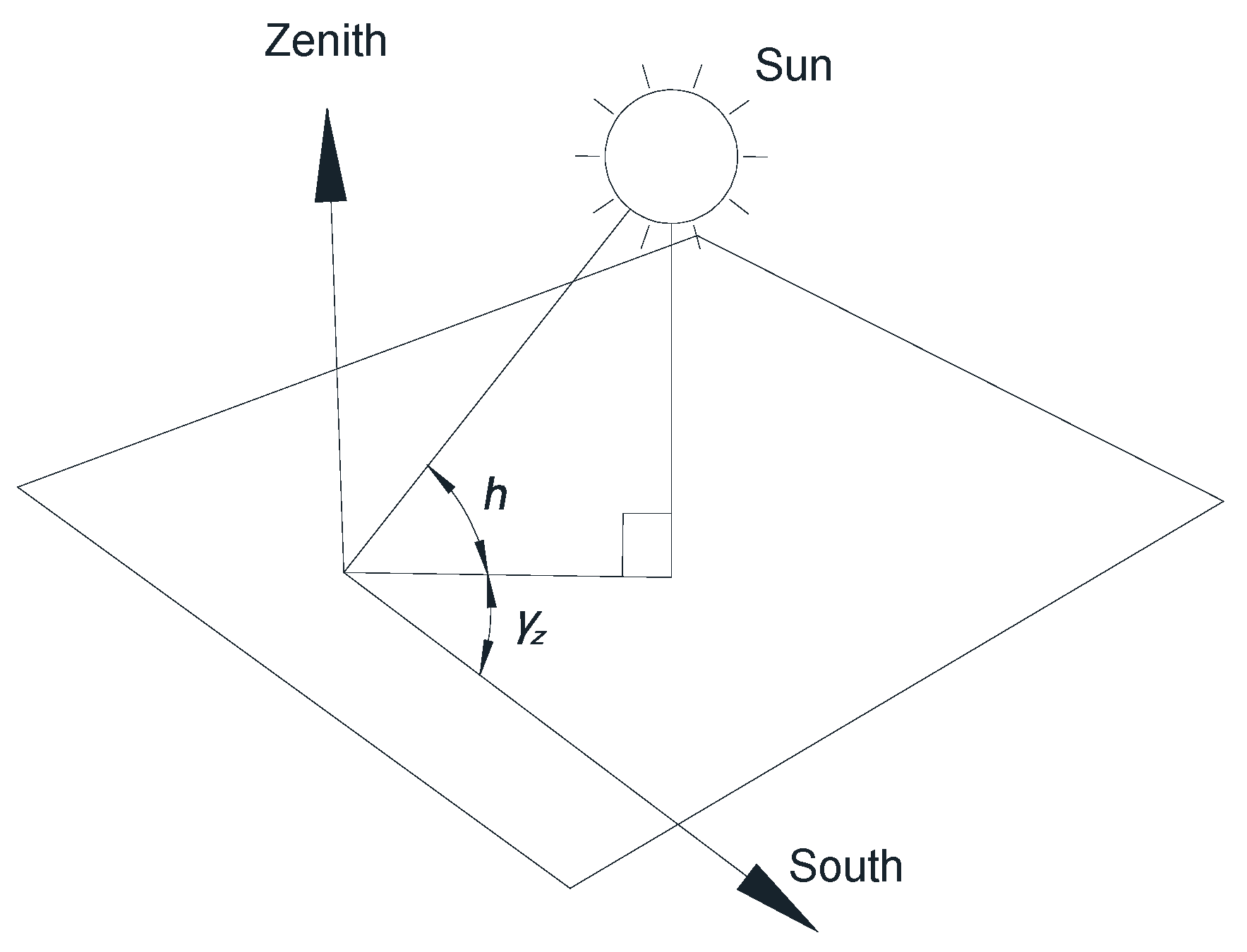
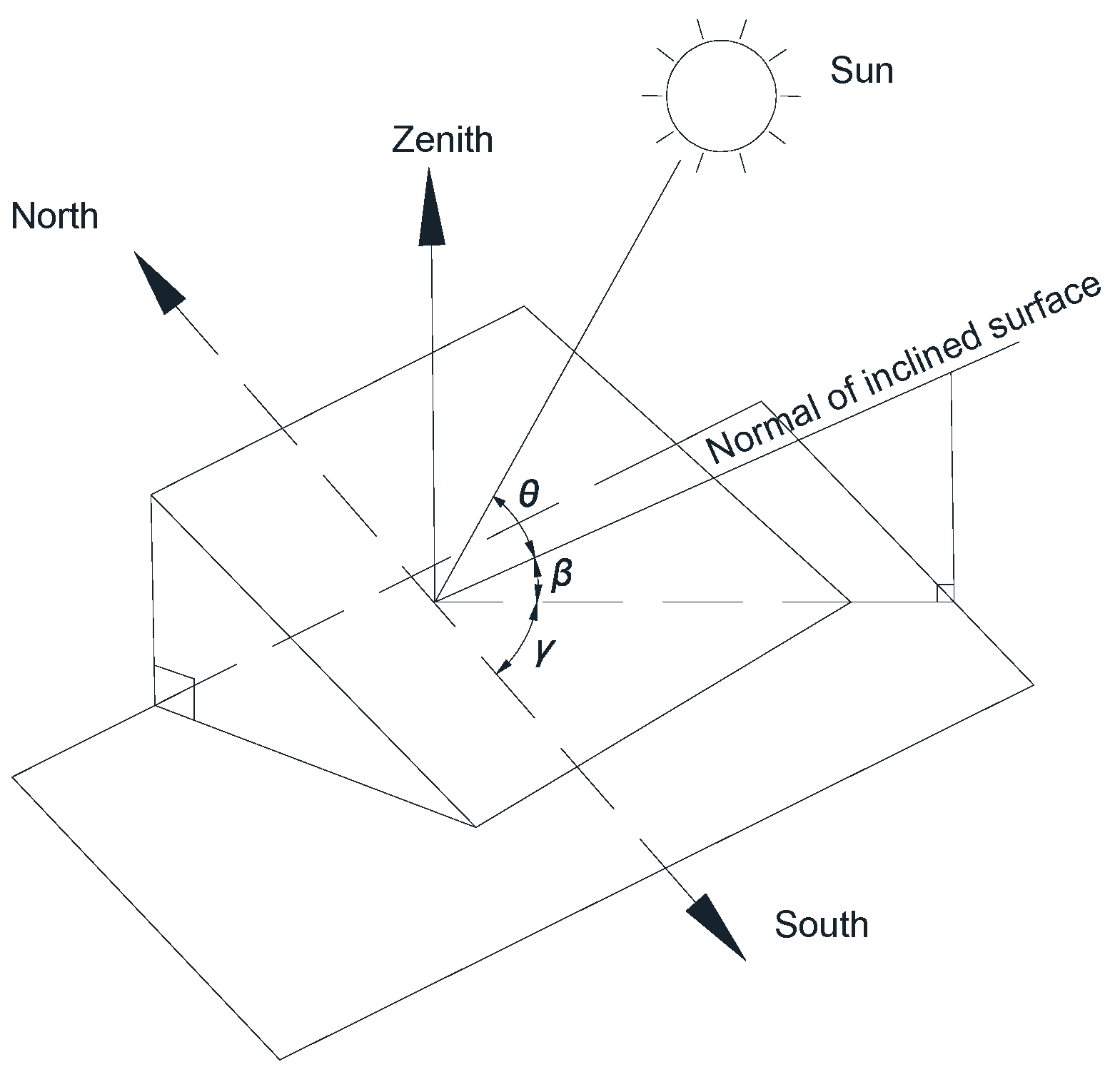
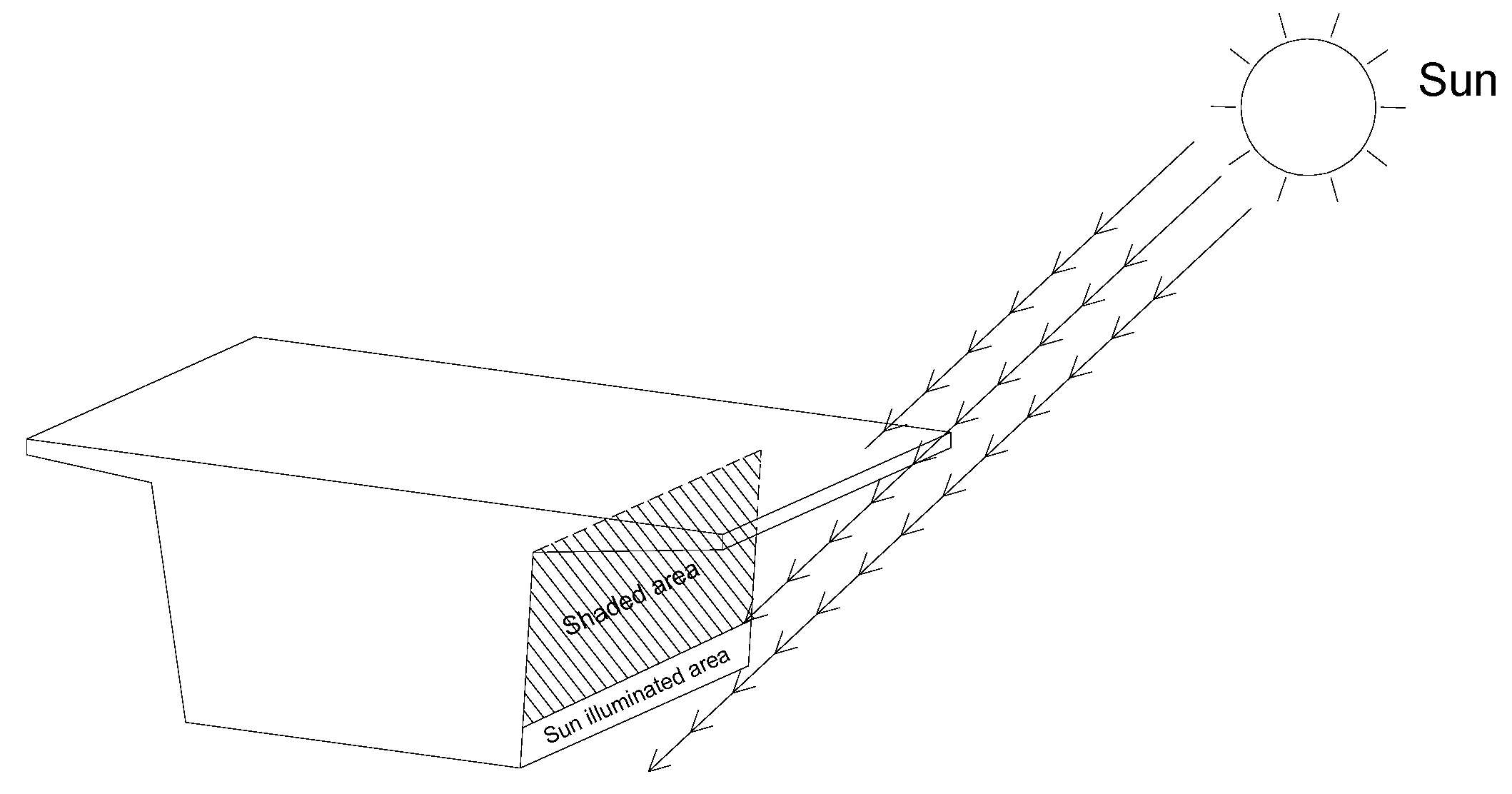
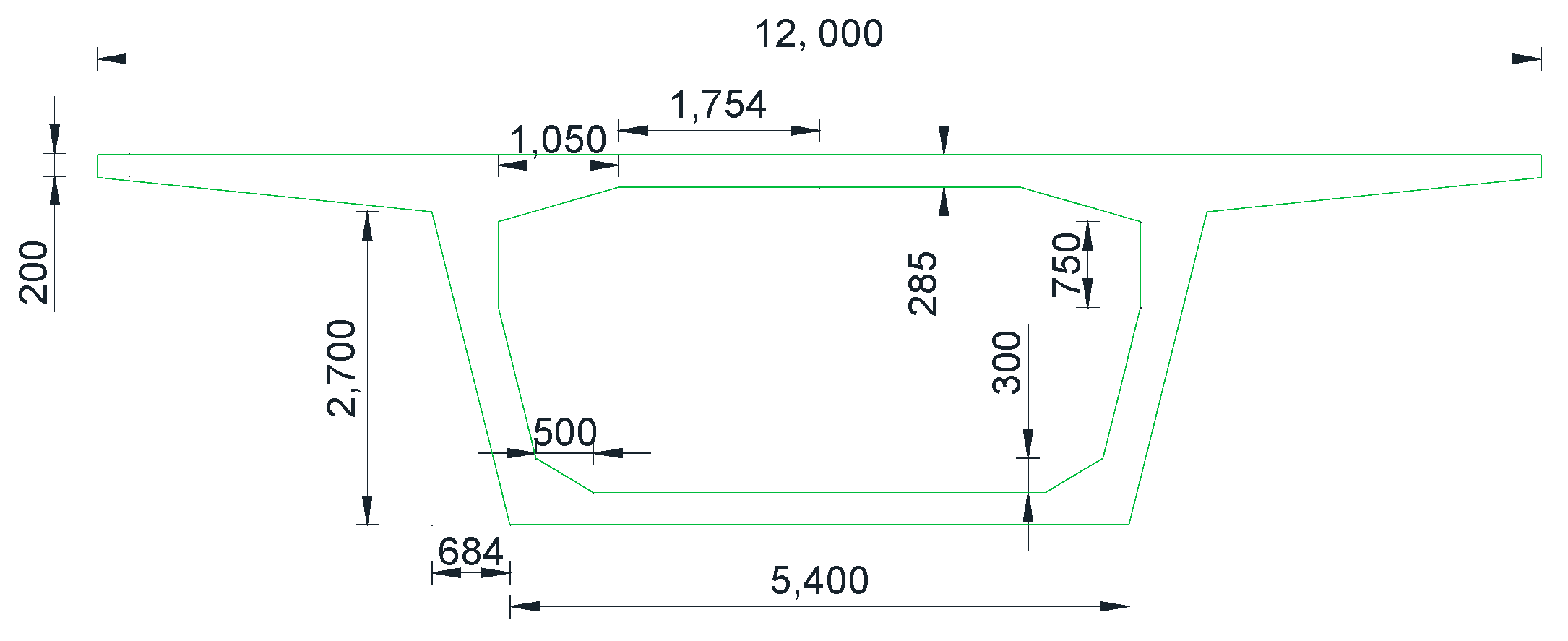
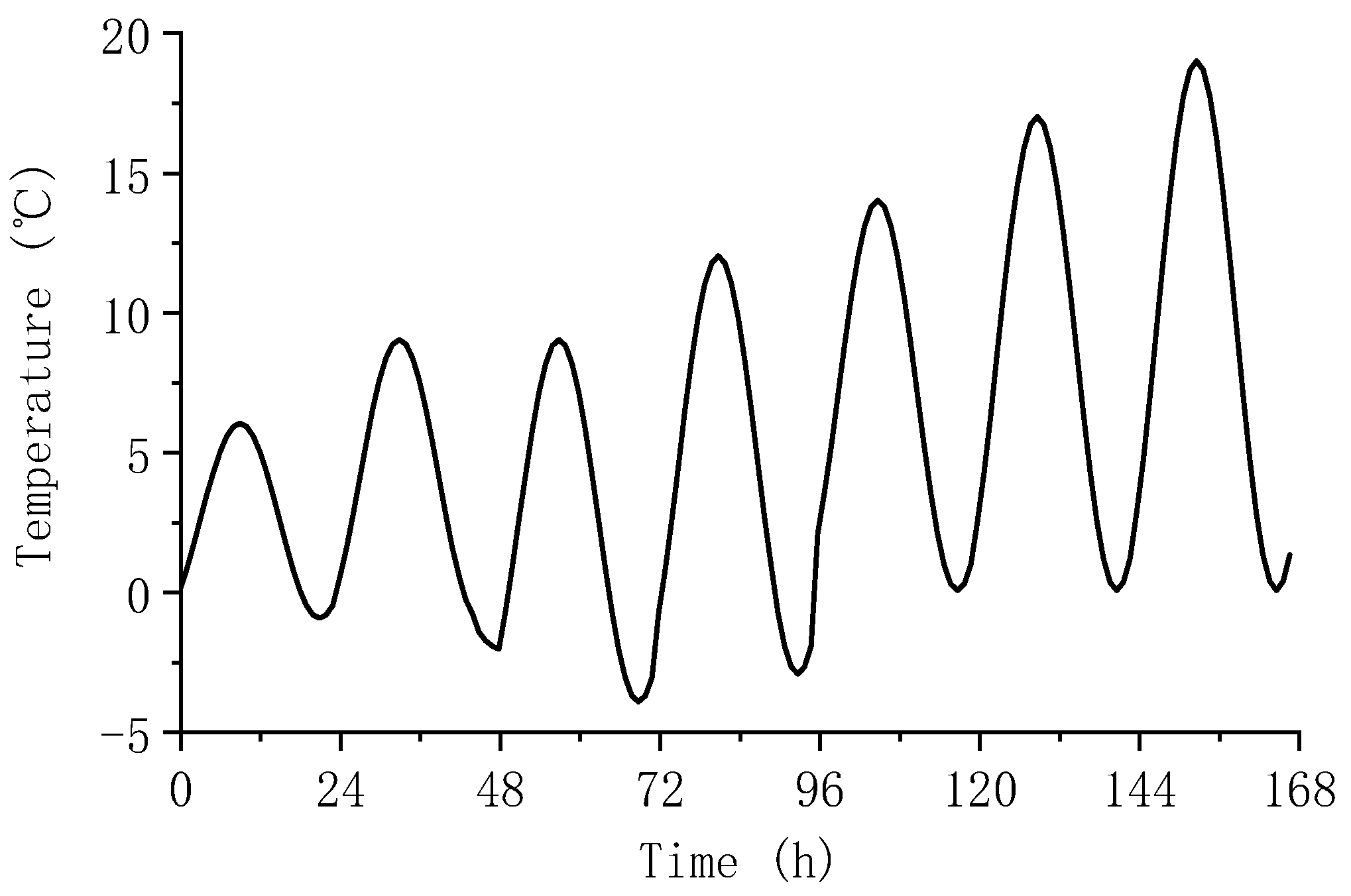
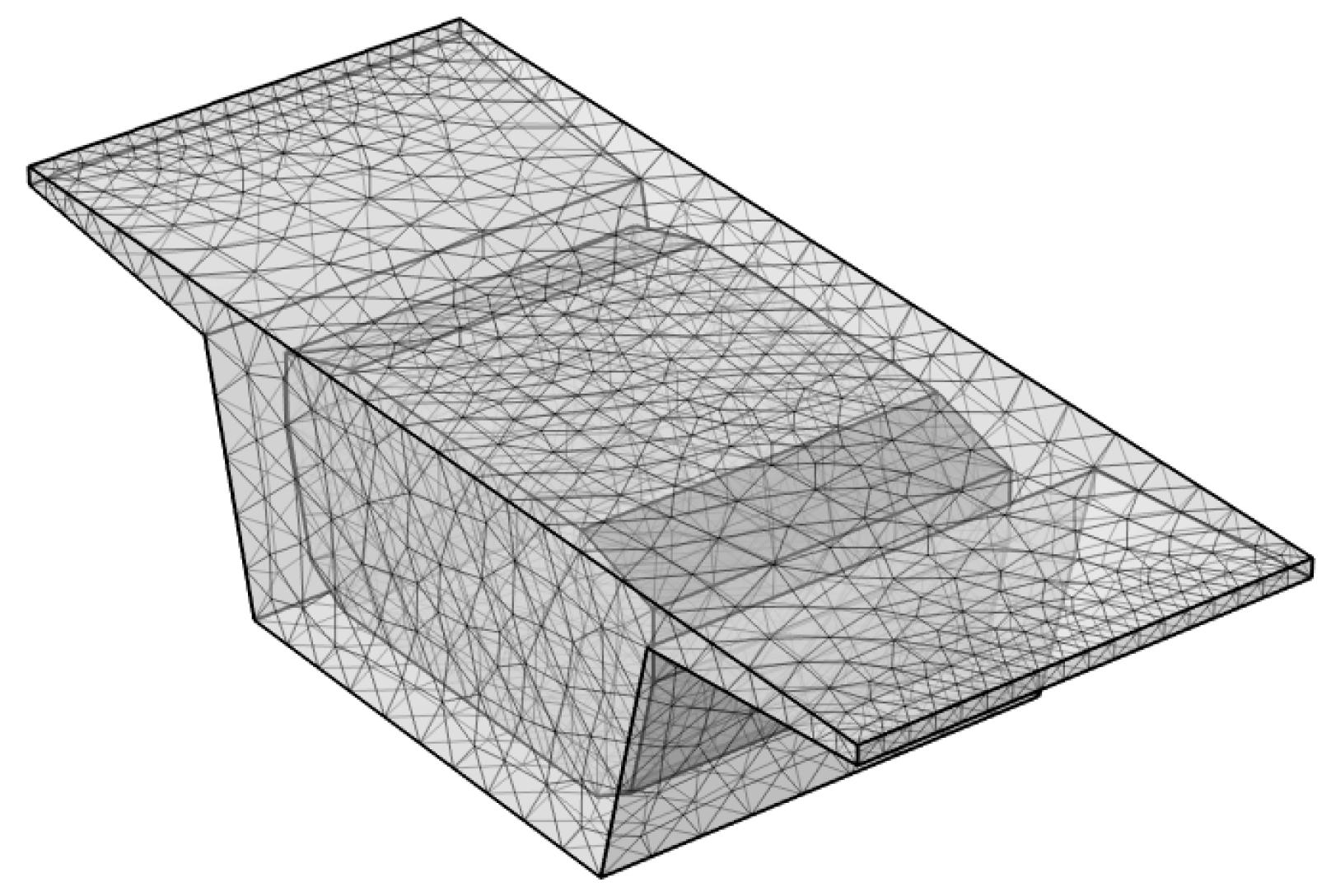

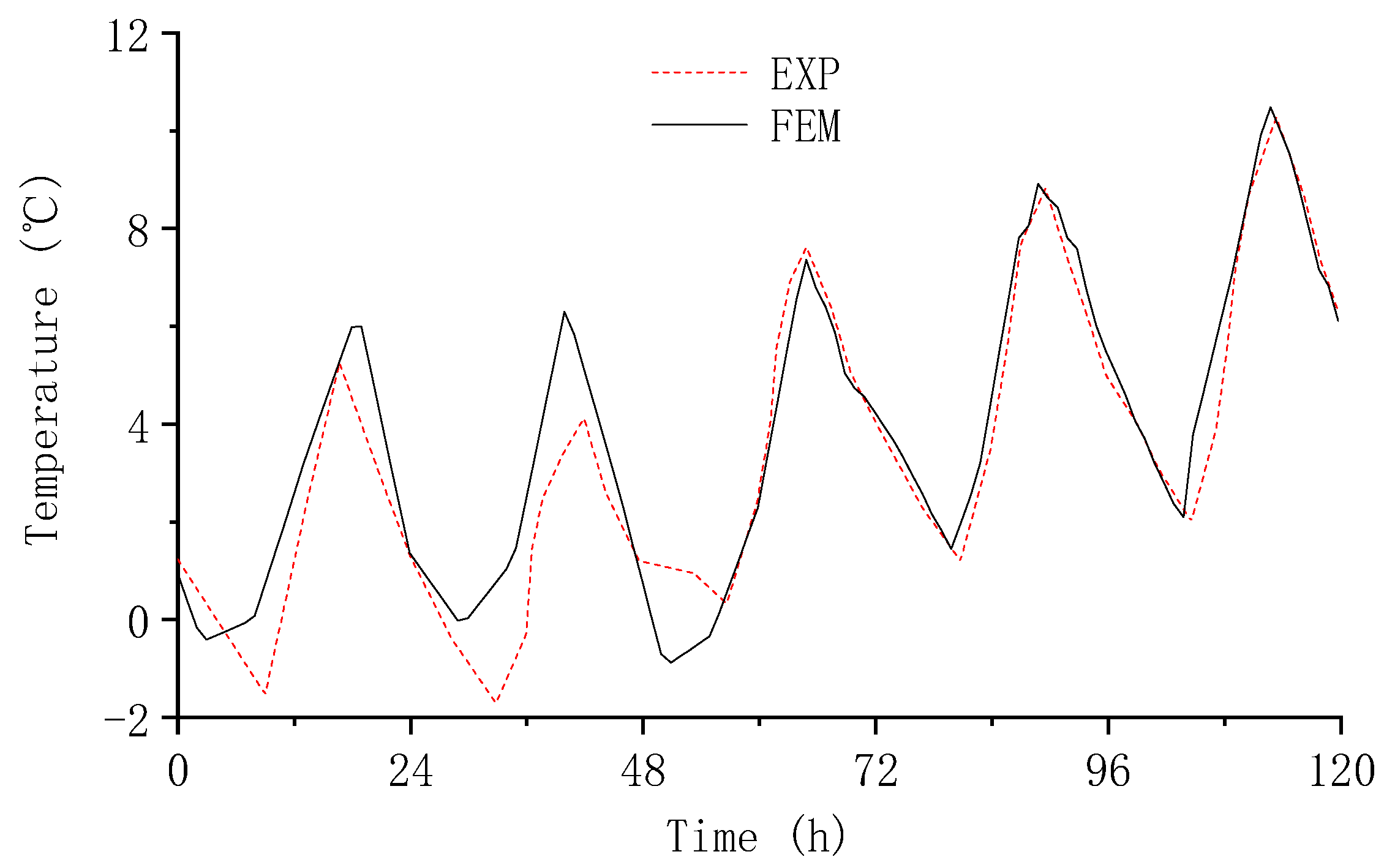
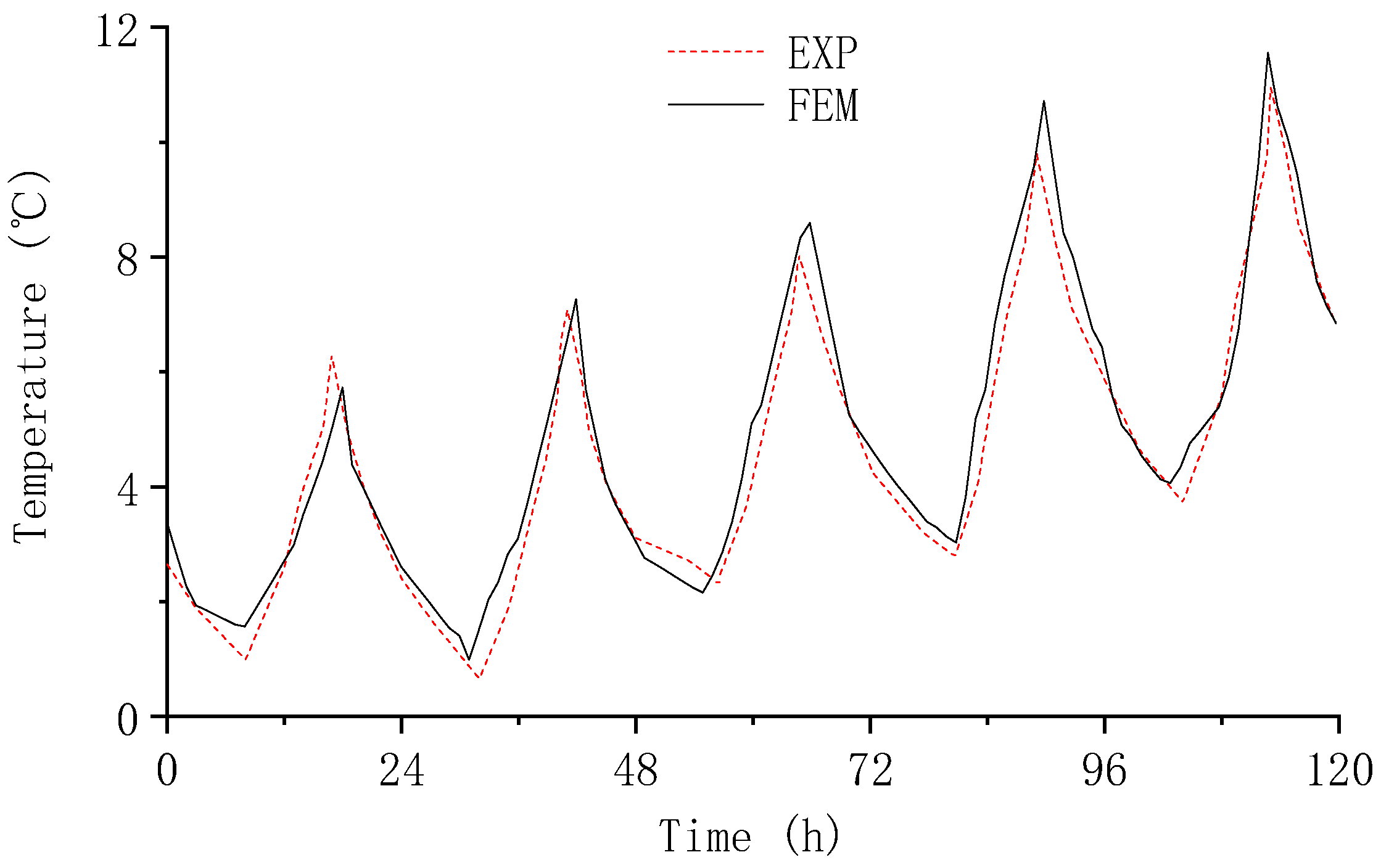

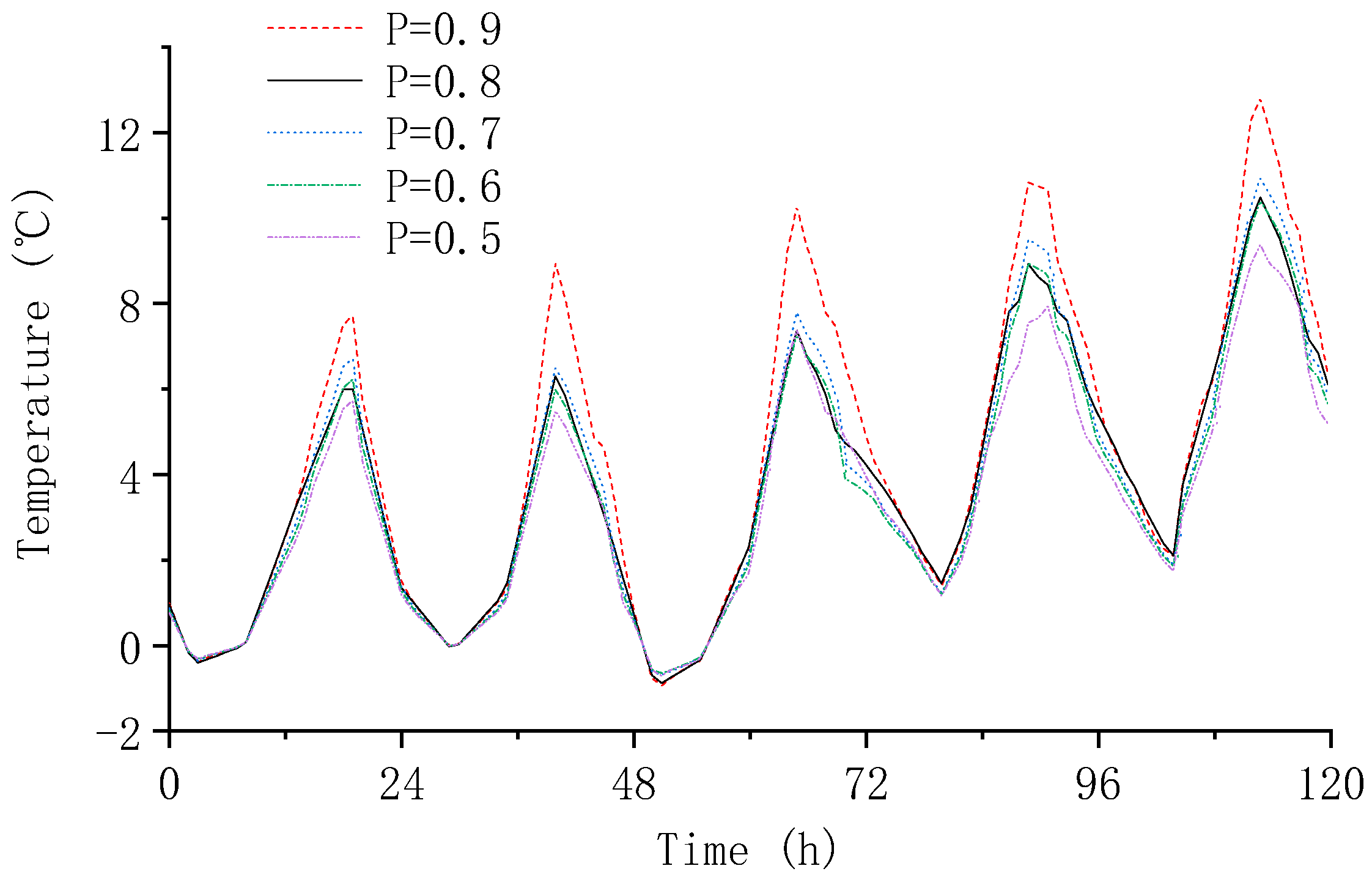
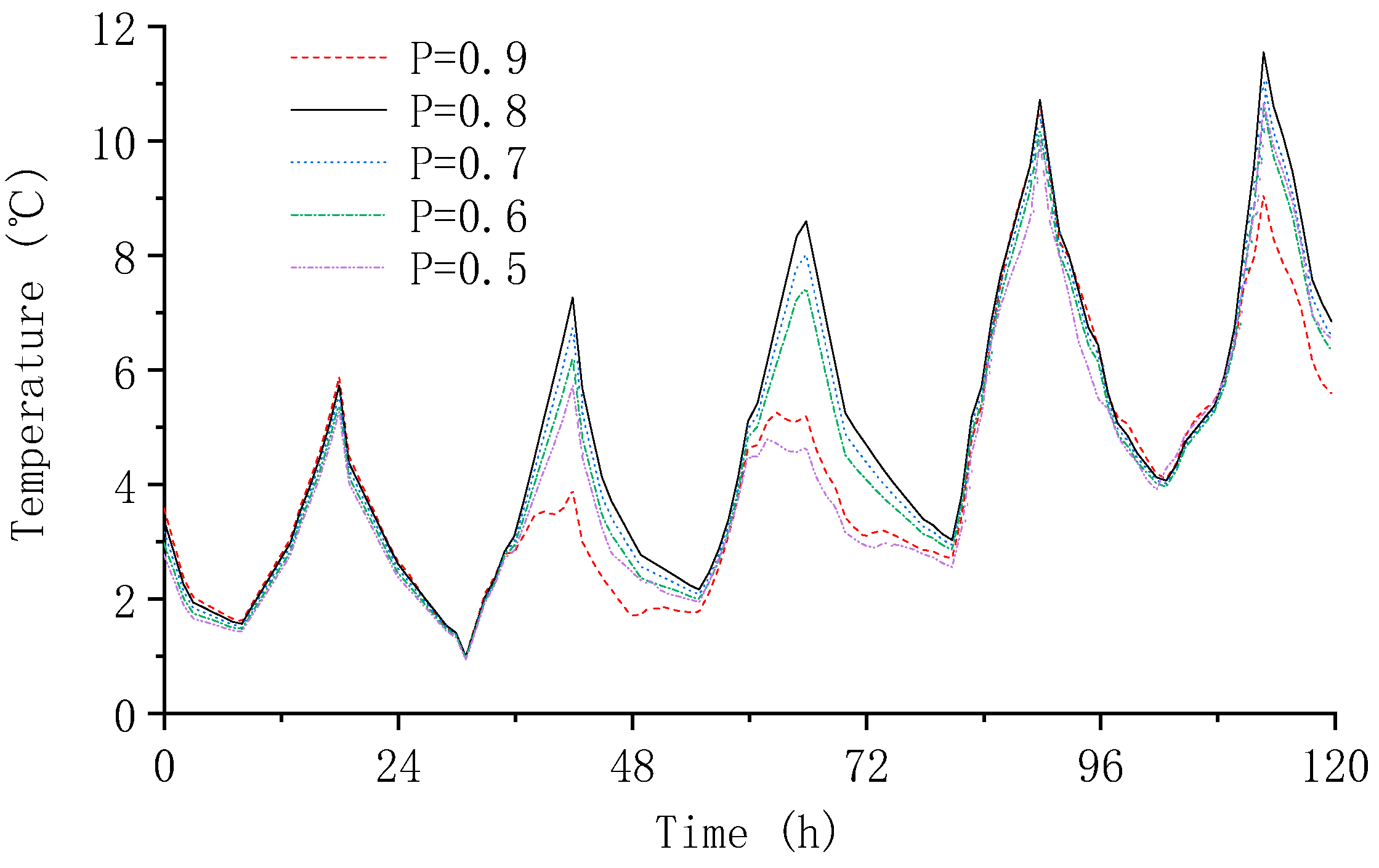
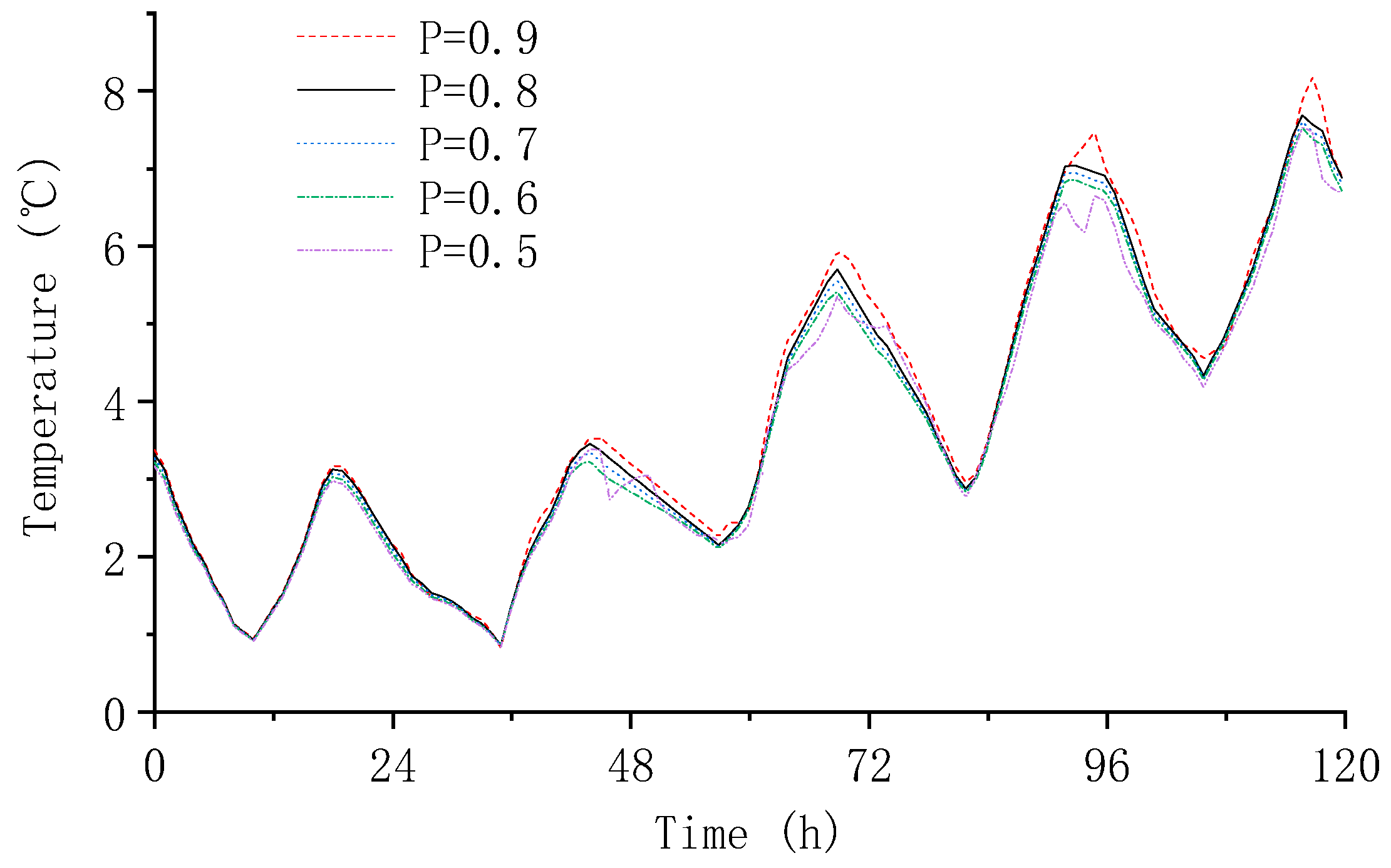
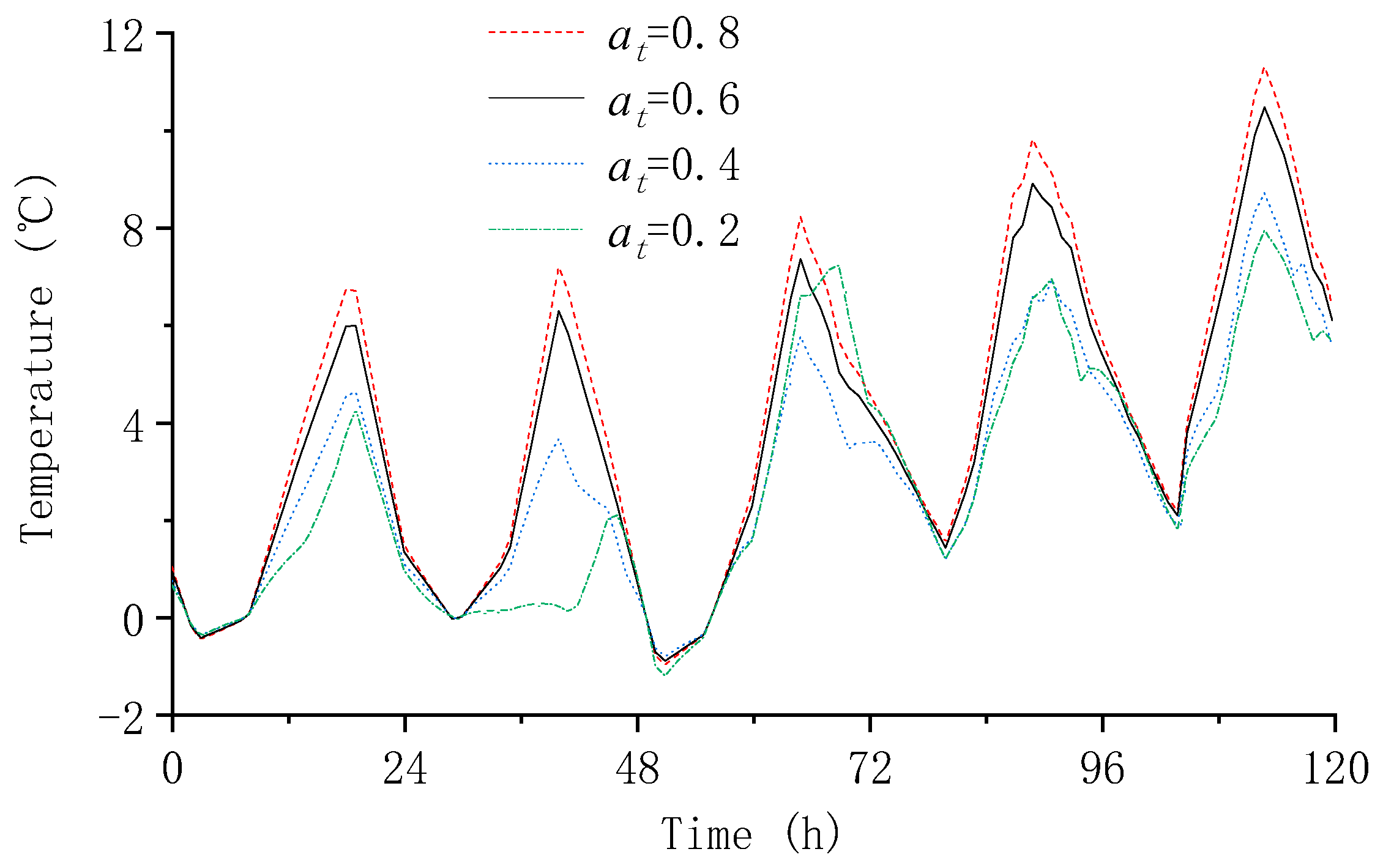
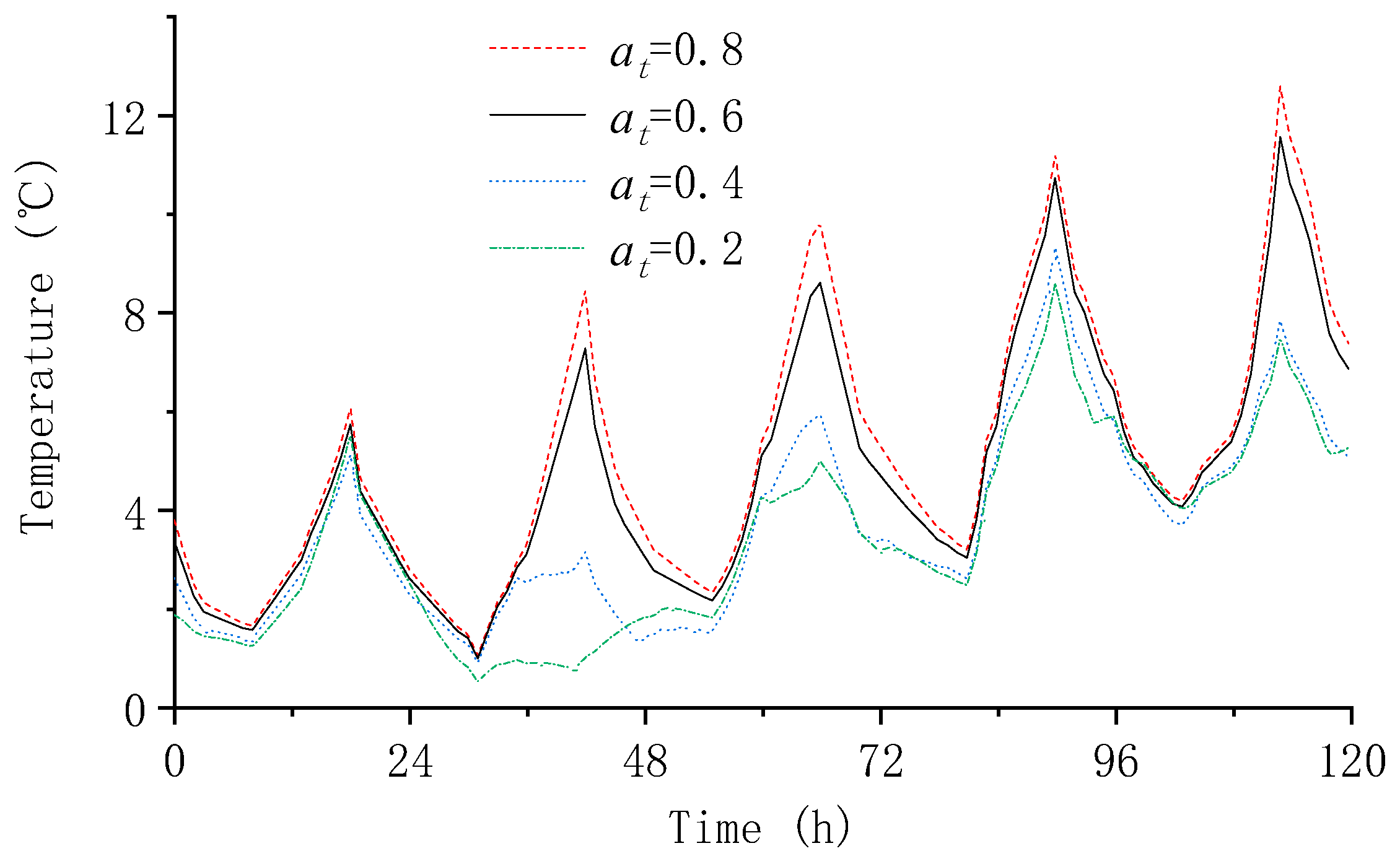
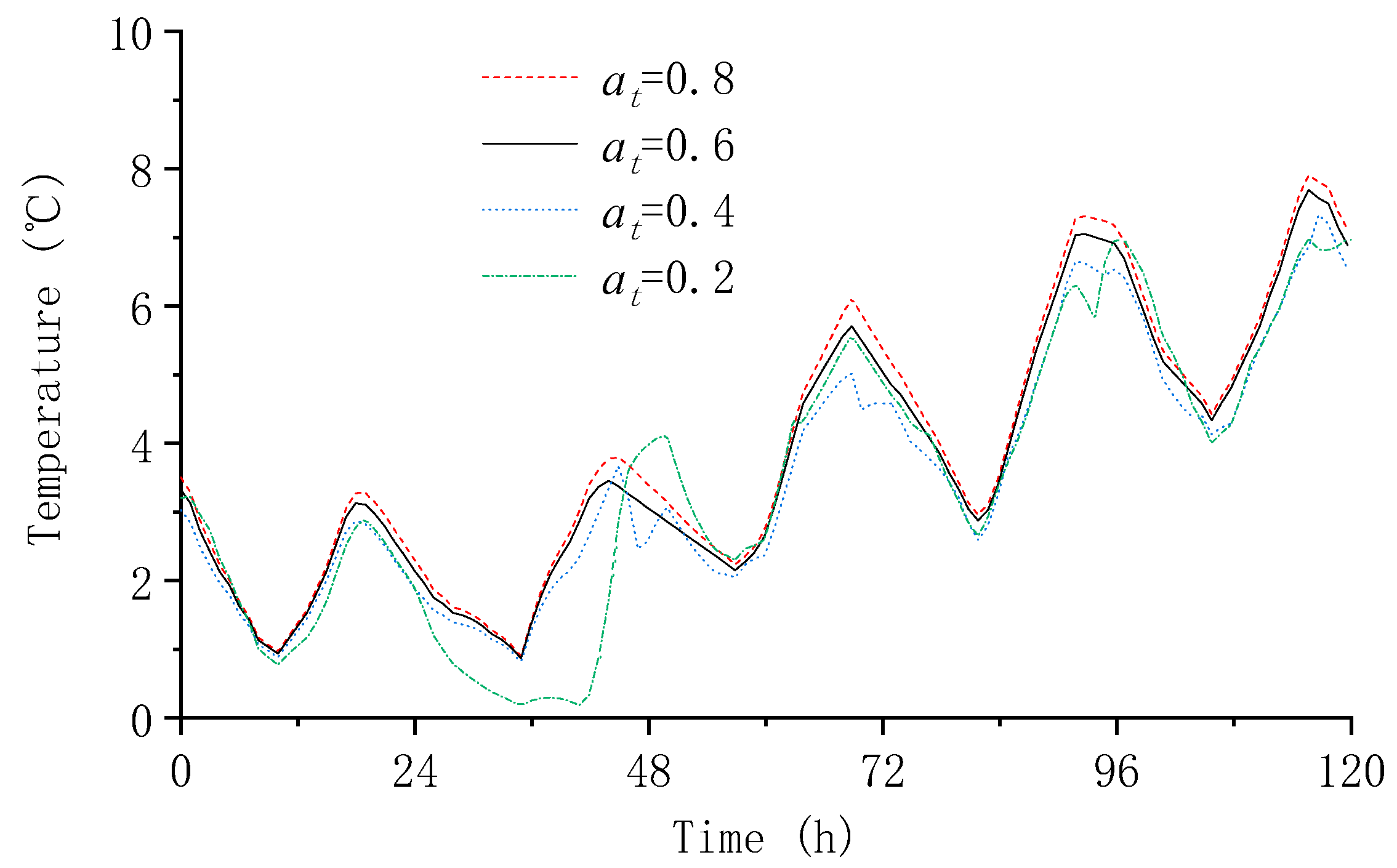
| Day/Month | Maximum Temperature | Minimum Temperature | Atmospheric Sine Function |
|---|---|---|---|
| 27/12 | 6 | −1 | |
| 28/12 | 9 | −1 | |
| 29/12 | 9 | −4 | |
| 30/12 | 12 | −3 | |
| 31/12 | 14 | 0 | |
| 1/1 | 17 | 0 | |
| 2/1 | 19 | 0 |
Disclaimer/Publisher’s Note: The statements, opinions and data contained in all publications are solely those of the individual author(s) and contributor(s) and not of MDPI and/or the editor(s). MDPI and/or the editor(s) disclaim responsibility for any injury to people or property resulting from any ideas, methods, instructions or products referred to in the content. |
© 2025 by the authors. Licensee MDPI, Basel, Switzerland. This article is an open access article distributed under the terms and conditions of the Creative Commons Attribution (CC BY) license (https://creativecommons.org/licenses/by/4.0/).
Share and Cite
Yan, B.; Fu, H.; Su, H.; Hou, B. Influence of Boundary Conditions on the Three-Dimensional Temperature Field of a Box Girder in the Natural Environment: A Case Study. Appl. Sci. 2025, 15, 1378. https://doi.org/10.3390/app15031378
Yan B, Fu H, Su H, Hou B. Influence of Boundary Conditions on the Three-Dimensional Temperature Field of a Box Girder in the Natural Environment: A Case Study. Applied Sciences. 2025; 15(3):1378. https://doi.org/10.3390/app15031378
Chicago/Turabian StyleYan, Bin, Hexin Fu, Haiting Su, and Benguang Hou. 2025. "Influence of Boundary Conditions on the Three-Dimensional Temperature Field of a Box Girder in the Natural Environment: A Case Study" Applied Sciences 15, no. 3: 1378. https://doi.org/10.3390/app15031378
APA StyleYan, B., Fu, H., Su, H., & Hou, B. (2025). Influence of Boundary Conditions on the Three-Dimensional Temperature Field of a Box Girder in the Natural Environment: A Case Study. Applied Sciences, 15(3), 1378. https://doi.org/10.3390/app15031378






